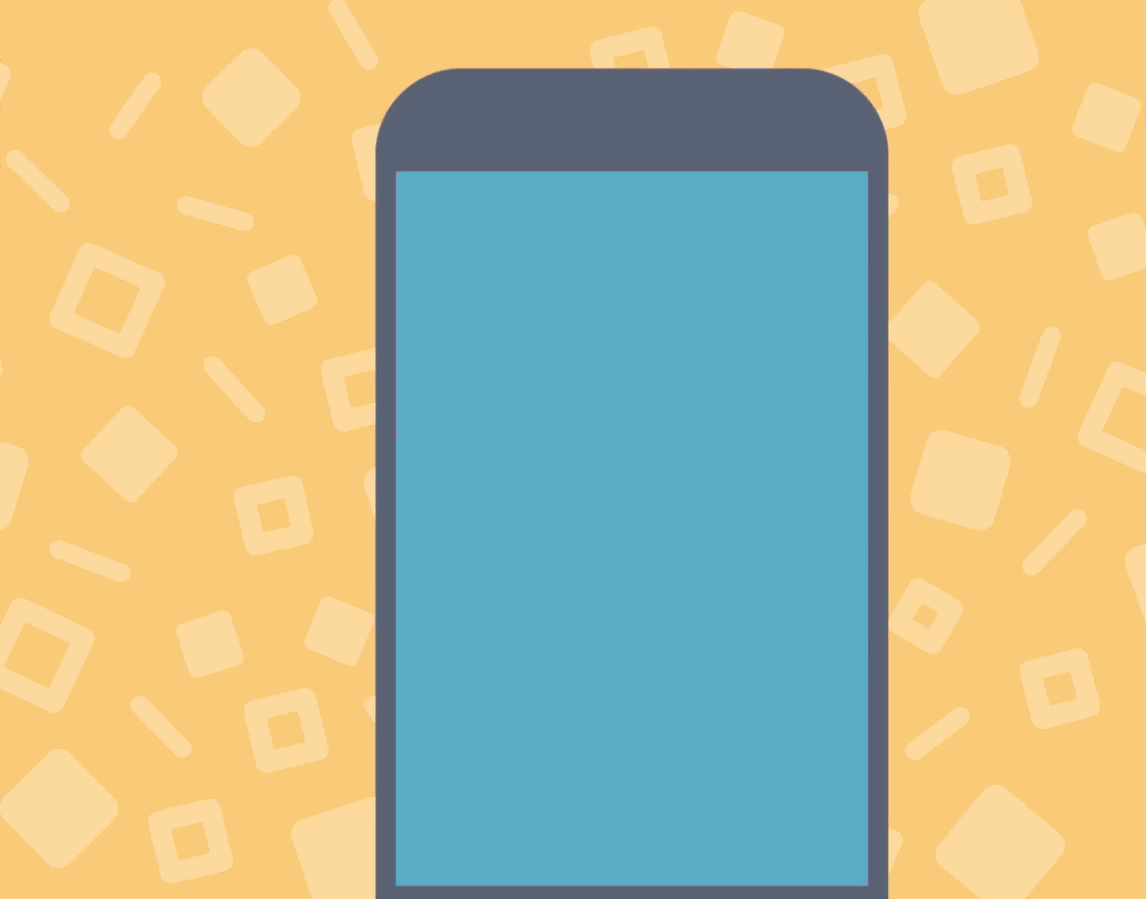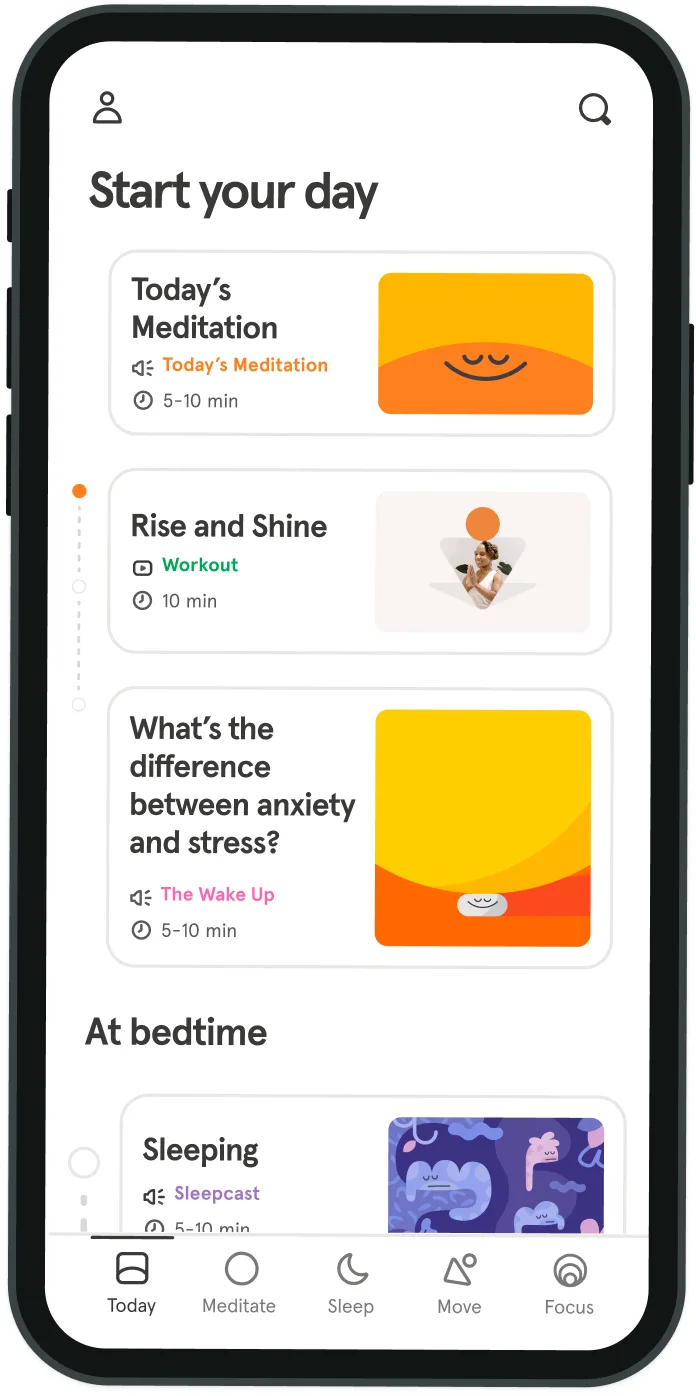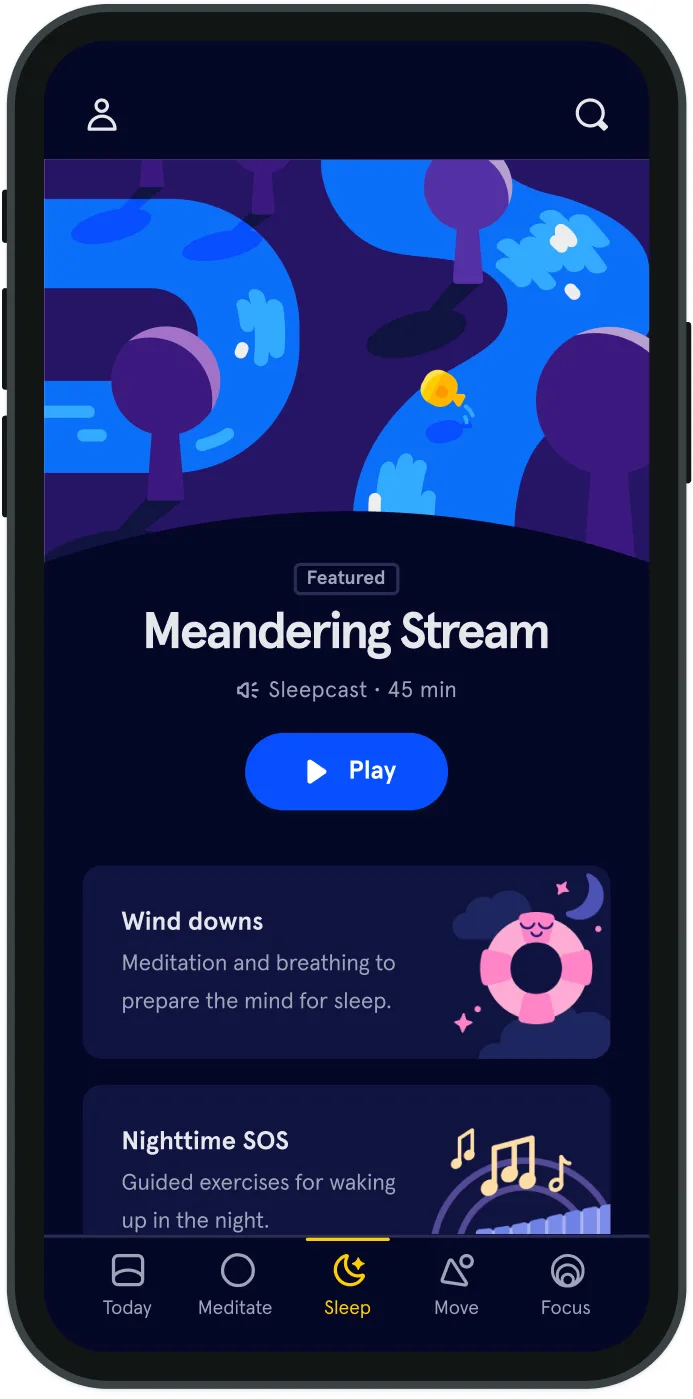I used Headspace for my chronic pain. Here’s what happened.
I must admit that when I was introduced to Headspace's Pain Management meditation pack, I was beyond skeptical. Not because I’m unfamiliar with meditation; I consider myself well-versed in most of the tools available to make the practice more accessible.
In fact, I was perfectly willing to accept that many of the meditation programs available could help me focus my thoughts, calm my anxieties, and guide me in controlling my breathing, particularly when I’m having a panic attack. But my physical pain? Yeah, no. In my mind, that was entirely different. That feeling of needles prickling my extremities or that deep, searing pain in my muscles—all gifts from my enemy, Fibromyalgia—can be managed by using an app on my phone? I doubted it. Sure, I was aware of the mind-body connection. But I suppose I’d placed my illness in a particular place in my mind and heart where what I was telling myself about it reigned supreme and where healing, even the possibility of it, couldn’t be reached. Nevertheless, if you live with any form of chronic pain, you are likely as willing as me to try something, anything, at least once. It’s how we find out what works for our particular issue and what doesn’t. So on Day 1, right before I went to bed (a high point in the day for my pain), I put my earphones in, turned on the app and opened myself up—if only a little bit—to the possibility that something great might happen. And something great did happen! I fell asleep.
Now sleep for someone with Fibro is a gift from the heavens and should never, ever, be considered a failure. That said, I don’t think that was the intended effect. So the next evening, Day 2, I gave it another shot. There was an introduction, the same as the day before, and then a guided meditation followed for 15 minutes. Although I can’t really verify that the Day 2 meditation actually lasted 15 minutes because I simply woke up the next day wrapped up in the cord of my earphones with the morning sun shining through my window blinds. Needless to say, my experience with the app was shaping up to be an epic fail. After one more day, I finally realized that doing the meditation in the evening, though it was the height of my Fibro pain, was not working because my exhaustion was preventing me from being fully present. So I decided to go a different route. I needed to do the app at a time when I had to be alert and when I could not multitask. So I decided that I would do the app—wait for it—in the car. My reasoning was that my commute into work was the only time I had to myself where I could focus inward, even if I couldn’t close my eyes. The road, the lights, the other cars could be like white noise and maybe I could observe my pain from the inside much better that way. Do I need to say how well that went? Let’s just say that I’m sure car meditation is a thing, but I don’t think it’s how this app is designed to work. [Editor’s Note: Please don’t try this app while driving.]
I finally settled on a time of day that would allow me to reasonably—way more reasonably than up until then—explore whether or not this tool would be useful in helping me deal with my chronic pain. As a full-time professor, I have a break in the middle of my day that I usually spend writing or catching up on other non-academic work. I decided to use fifteen minutes of that time to use the app and I must say, by Day 10 (the first section of the 3-part pack), all skepticism dissolved. Here’s the thing: if you are looking for something that will completely take away your pain or if you are looking for some kind of quick fix to employ for immediate relief, this isn’t it. But that’s not what this meditation was meant to do. What using Headspace allowed me to do is to view my pain and ultimately myself, differently. In a way I’ve yet to be able to explain properly, the app allowed me to step outside myself and observe how my Fibro pain functions in my body. It offered me clarity on the type of pain (is it a needling pain, numbness, or something more bruising?) I was experiencing. This is incredibly helpful when attempting to describe something so nondescript to doctors and other health practitioners. Even more importantly, using this app gave me a real chance to observe my thoughts about my pain. I’m a storyteller and what I came to realize was that I’d built entire narratives around my Fibro pain. I’d become comfortable with pain being a part of my identity. These stories I was telling, these narratives, were not serving me well. Once I sat still long enough to notice the thoughts I was having about my pain, and then my body’s subsequent response to those thoughts (more pain!), I was able to manage the pain differently and, dare I say, better. In that way, the pain is lessened—not because I don’t feel anything but because I don’t attach anything to it. I suppose my experience with Headspace’s Pain Management pack revealed a couple of things: 1. In order for any act of self-care to “work,” you must make room for it. Translation: don’t do this in the car. 2. The true beauty in these kinds of tools is that they are not necessarily some “magic fix” but a way of living and seeing your reality differently and changing the way you think about that reality. The healing comes after.



Be kind to your mind
- Access the full library of 500+ meditations on everything from stress, to resilience, to compassion
- Put your mind to bed with sleep sounds, music, and wind-down exercises
- Make mindfulness a part of your daily routine with tension-releasing workouts, relaxing yoga, Focus music playlists, and more
Meditation and mindfulness for any mind, any mood, any goal

Stay in the loop
Be the first to get updates on our latest content, special offers, and new features.
By signing up, you’re agreeing to receive marketing emails from Headspace. You can unsubscribe at any time. For more details, check out our Privacy Policy.
- © 2025 Headspace Inc.
- Terms & conditions
- Privacy policy
- Consumer Health Data
- Your privacy choices
- CA Privacy Notice
